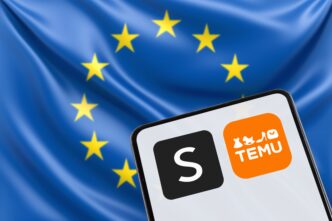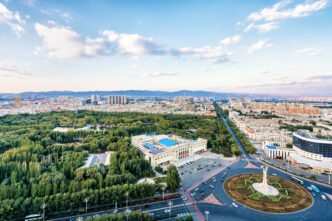Executive Summary
The Story So Far
Why This Matters
Who Thinks What?
U.S. President Donald Trump is still expected to meet Chinese leader Xi Jinping in South Korea later this month, U.S. Treasury Secretary Scott Bessent announced on Monday, despite a recent escalation in trade tensions between the two global powers. The planned meeting aims to de-escalate disputes that arose from China’s expanded rare earths export controls and President Trump’s subsequent threat of a 100% tariff on Chinese goods.
De-escalation Efforts Amid Rising Tensions
The latest rupture in U.S.-China relations followed China’s announcement last Thursday of a dramatic expansion of its rare earths export controls. President Trump responded with a sharp countermeasure on Friday, which sent global markets and diplomatic relations into a spiral.
Treasury Secretary Bessent indicated that substantial communications occurred between the two sides over the weekend, with more meetings anticipated. “We have substantially de-escalated,” Bessent stated in an interview with Fox Business Network, adding that President Trump’s tariffs would not take effect until November 1.
Market Reaction and Upcoming Discussions
The softer tone from the U.S. Treasury helped soothe a jittery Wall Street, sparking a strong rebound in U.S. stocks on Monday. The tech-heavy Nasdaq Composite index rose nearly 2%, with other major indexes also seeing gains of about 1%.
President Trump’s tariff threat on Friday had previously triggered a significant sell-off, intensifying anxieties among investors and policymakers about a potentially frothy stock market fueled by an artificial intelligence investment boom.
Further discussions are planned, with U.S.-China staff-level meetings scheduled for this week in Washington. These talks will take place on the sidelines of the annual World Bank and International Monetary Fund gatherings, signaling ongoing diplomatic engagement.
U.S. Stance on Trade Practices
Bessent emphasized that the threatened 100% tariff “does not have to happen” and characterized the overall relationship as “good,” despite last week’s announcement. He noted that lines of communication have reopened, suggesting a path forward for negotiations.
Despite the efforts to de-escalate, Bessent described China’s recent move as provocative, confirming that the U.S. pushed back aggressively. He indicated that the United States has been in contact with allies and expects support from European nations, India, and democracies in Asia.
In a strong statement, Bessent asserted, “China is a command and control economy. They are neither going to command nor control us.” This reflects the U.S. administration’s firm stance against what it perceives as coercive economic practices.
China’s Perspective on Export Controls
China, for its part, blamed the United States for the escalating trade tensions on Sunday, calling President Trump’s latest tariff threats “hypocritical.” Beijing defended its curbs on exports of rare earth elements and related equipment, which are crucial for tech manufacturing.
Under China’s new regulations, foreign companies producing certain rare earths and related magnets will now require a Chinese export license if the final product contains or is made with Chinese equipment or material, even if no Chinese companies are directly involved in the transaction. The U.S. has indicated it would reject such licensing requirements.
Outlook on U.S.-China Trade Relations
As President Trump and President Xi prepare for their late October summit, the two economic superpowers continue to navigate a complex and often volatile trade relationship. The upcoming high-level meeting and ongoing staff-level discussions underscore persistent efforts to manage disputes and prevent further economic disruption, despite recent sharp exchanges over critical resources and tariffs.








